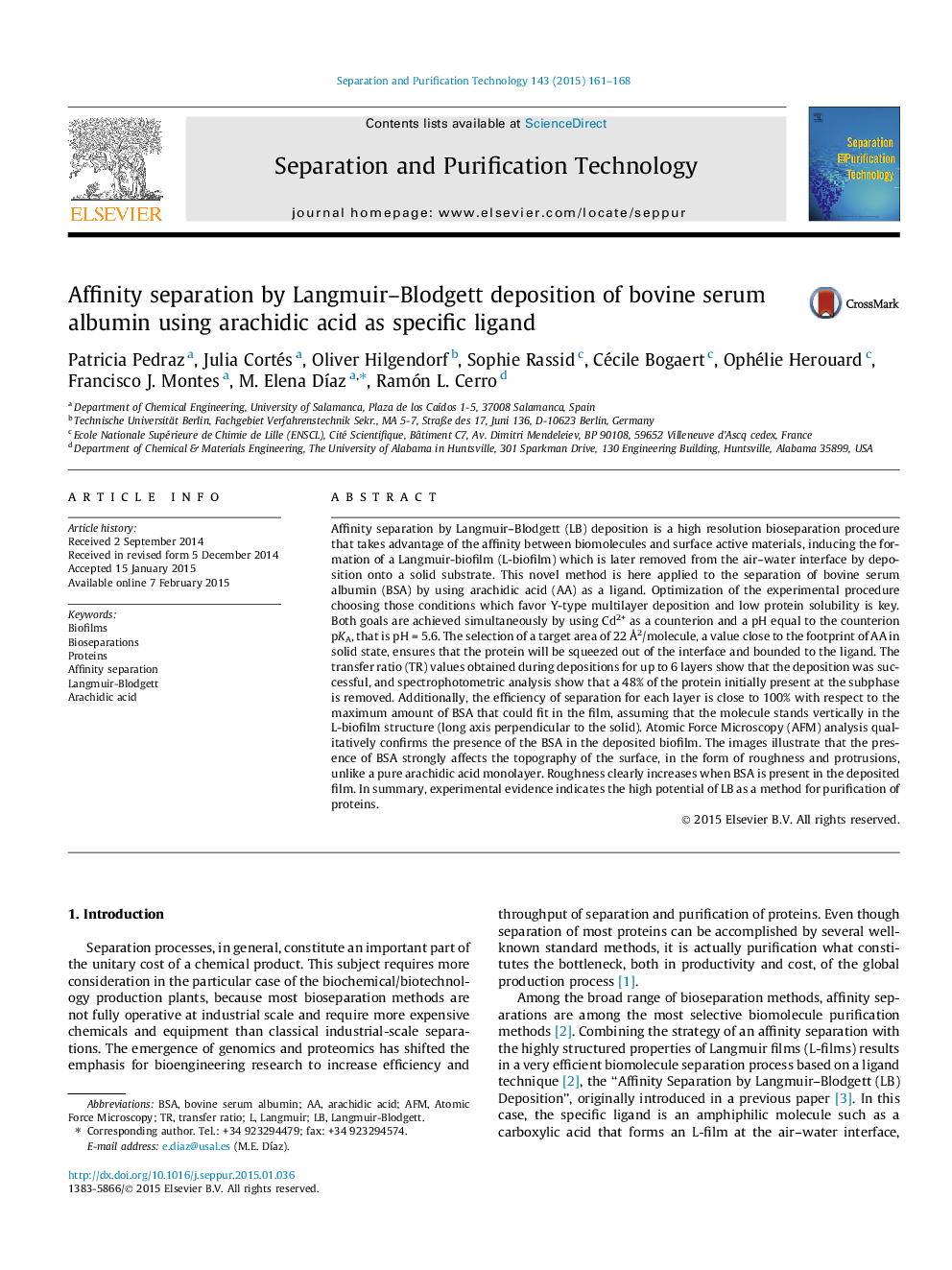| Article ID | Journal | Published Year | Pages | File Type |
|---|---|---|---|---|
| 640552 | Separation and Purification Technology | 2015 | 8 Pages |
•Langmuir–Blodgett can be used as a high resolution bioseparation technique.•Bovine serum albumin (BSA) is separated using arachidic acid (AA) as ligand.•Multilayers of BSA-AA are deposited on glass substrates with the aim of cadmium.•After 6 strokes, 48% of the protein initially present at the subphase is removed.•BSA stands vertically in the biofilm increasing roughness compared to pure AA films.
Affinity separation by Langmuir–Blodgett (LB) deposition is a high resolution bioseparation procedure that takes advantage of the affinity between biomolecules and surface active materials, inducing the formation of a Langmuir-biofilm (L-biofilm) which is later removed from the air–water interface by deposition onto a solid substrate. This novel method is here applied to the separation of bovine serum albumin (BSA) by using arachidic acid (AA) as a ligand. Optimization of the experimental procedure choosing those conditions which favor Y-type multilayer deposition and low protein solubility is key. Both goals are achieved simultaneously by using Cd2+ as a counterion and a pH equal to the counterion pKA, that is pH = 5.6. The selection of a target area of 22 Å2/molecule, a value close to the footprint of AA in solid state, ensures that the protein will be squeezed out of the interface and bounded to the ligand. The transfer ratio (TR) values obtained during depositions for up to 6 layers show that the deposition was successful, and spectrophotometric analysis show that a 48% of the protein initially present at the subphase is removed. Additionally, the efficiency of separation for each layer is close to 100% with respect to the maximum amount of BSA that could fit in the film, assuming that the molecule stands vertically in the L-biofilm structure (long axis perpendicular to the solid). Atomic Force Microscopy (AFM) analysis qualitatively confirms the presence of the BSA in the deposited biofilm. The images illustrate that the presence of BSA strongly affects the topography of the surface, in the form of roughness and protrusions, unlike a pure arachidic acid monolayer. Roughness clearly increases when BSA is present in the deposited film. In summary, experimental evidence indicates the high potential of LB as a method for purification of proteins.
